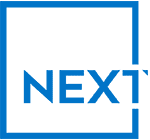Eco
Explore our collection of articles, guides, and insights in the Eco category. Whether you're looking for in-depth analysis, expert opinions, or practical advice, our Eco-tagged content covers a wide range of topics to inform, educate, and inspire.
Sustainability vs. Affordability in Large Format Printing: The Next Dilemma
Explore the dilemma of sustainability vs. affordability in large format printing with Next. Discover innovative…...
Read More
Recyclable vs Recycled: How many times can materials really be recycled?
Uncover the truth behind recycling materials in exhibition and retail printing. Discover sustainable solutions for…...
Read More
4 Ways To Go Green At Your Next Event
From the initial design conception and development, to eco-friendly printing, to packing and shipping, and…...
Read More
The Features Of An Eco-Friendly Exhibition Display
In the world of fashion and retail marketing, exhibition displays matter a lot. Beautiful, creative…...
Read More
